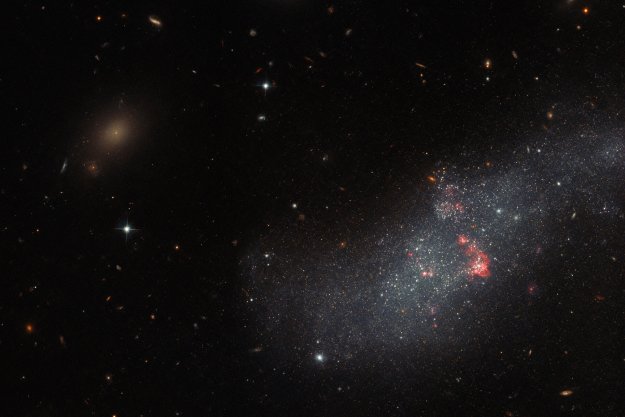A new image from the Hubble Space Telescope released on Monday, July 6, shows the beautiful galaxy NGC 7513, nicknamed the Sculpted Galaxy by Hubble scientists because of its location in the Sculptor constellation. Located 60 million light-years away, the galaxy is on the move — and at a considerable speed.
“This galaxy is moving at the astounding speed of 1,564 kilometers [972 miles] per second, and it is heading away from us,” Hubble scientists wrote. “For context, the Earth orbits the sun at about 30 kilometers [19 miles] per second. Though NGC 7513’s apparent movement away from the Milky Way might seem strange, it is not that unusual.
“While some galaxies, like the Milky Way and the Andromeda galaxy, are caught in each other’s gravitational pull and will eventually merge together, the vast majority of galaxies in our universe appear to be moving away from each other. This phenomenon is due to the expansion of the universe, and it is the space between galaxies that is stretching, rather than the galaxies themselves moving.”

The rate of the expansion of the universe was one of the biggest findings from the 30-year history of the Hubble Space Telescope. The scientist the telescope is named after, Edwin Hubble, showed that the universe was expanding in the 1920s, and calculated this rate in a figure called the Hubble constant by using data from ground-based telescopes. By the time the Hubble Space Telescope was launched in 1990, scientists knew that the universe was expanding but did not agree at what speed.
To more precisely determine the Hubble constant, scientists needed more accurate tools to measure the way the light from distant galaxies was shifted. As a space-based telescope, the Hubble Space Telescope can take precise measurements of distant galaxies because it does not have to look through Earth’s atmosphere.
With more precise data from Hubble, scientists were able to determine how fast the universe was expanding and therefore calculate the age of the universe. Before Hubble, scientists thought the universe could be anywhere between 9.7 billion years old and 19.5 billion years old. Using the telescope, they determined that the universe is approximately 13.7 billion years old and the Hubble constant is 67.4 kilometers (42 miles) per second per megaparsec — although this figure continues to be refined over time.
Editors' Recommendations
- Hubble spots a bright galaxy peering out from behind a dark nebula
- Hubble captures a busy frame of four overlapping spiral galaxies
- Hubble captures a formation of galaxies neatly lined up
- Hubble observes a galaxy that hosted an epic supernova explosion
- Hubble image shows a lonely star glowing over an irregular background galaxy




